
What Is Sustainable Living?
We hear the phrase sustainable living—or iterations of it, such as sustainable shopping or zero waste living—thrown around a lot, nowhere more so than here at Sustainable Jungle.
But what does that phrase actually mean? Just what is sustainable living and how can we adopt its principles in a way that’s both practical and impactful?
First, realize that there is no absolute sustainable living definition; it means different things to different people, but in an overall nutshell, living sustainably means minimizing your use of Earth’s resources and reducing the damage of human and environmental interactions.
You can think of it as reducing your carbon footprint—but it goes far beyond that.
Let’s look deeper.
Our Considerations To Define Sustainable Living
- Definition of sustainable living
- Sustainable living examples & practices
- Benefits of sustainable living
1. Definition Of Sustainable Living
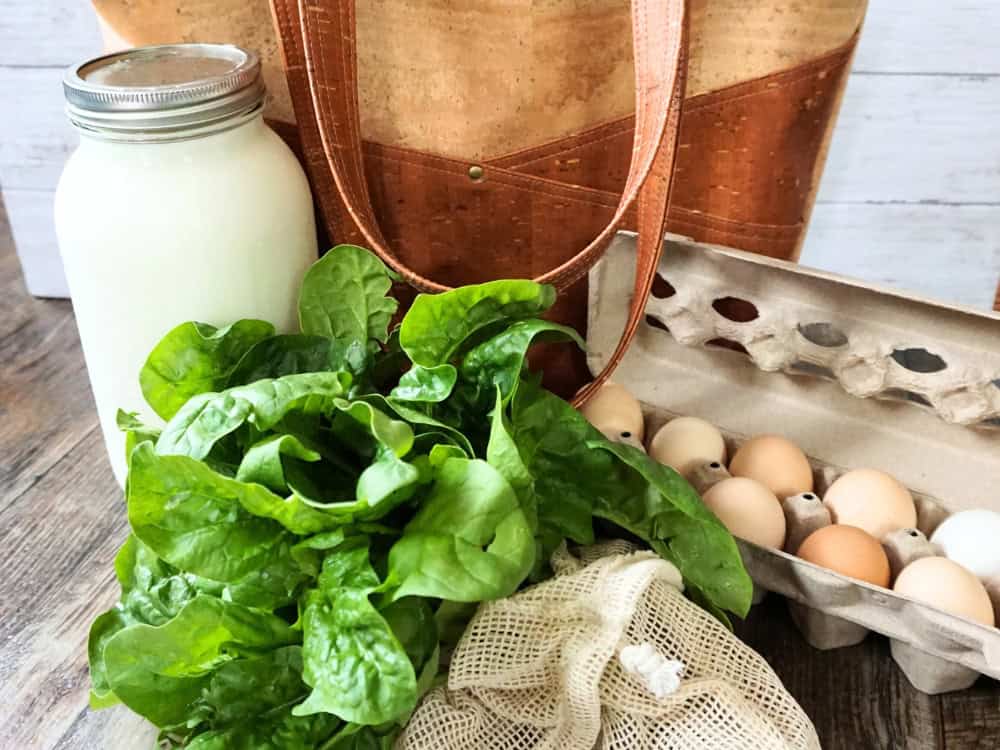
In complex terms, living in a sustainable way refers to a practical philosophy that aims to reduce personal and societal environmental impact to net zero by making positive changes which counteract climate change and other negative environmental concerns.
If all that sounds like waffle, more simply, sustainable living is about returning to the earth whatever you take from it. It aims to achieve an environmental equilibrium. This is sometimes called “net zero living” or striking a “zero energy balance” with the Earth.
Obviously, this is sustainability in its ideal form, and is virtually impossible for anyone to truly achieve.
So, instead of focusing on perfection, sustainable living practices focus on reducing one’s carbon footprint.
If you need motivation to jump on board, figure out yours using the World Wildlife Fund’s environmental footprint calculator.
But try as you might, nobody will ever be able to completely stamp out their carbon footprint. Hence, sustainability needs to be viewed in practical terms, which means we should all be taking small steps to consume earth’s resources consciously.
2. Sustainable Living Examples & Practices
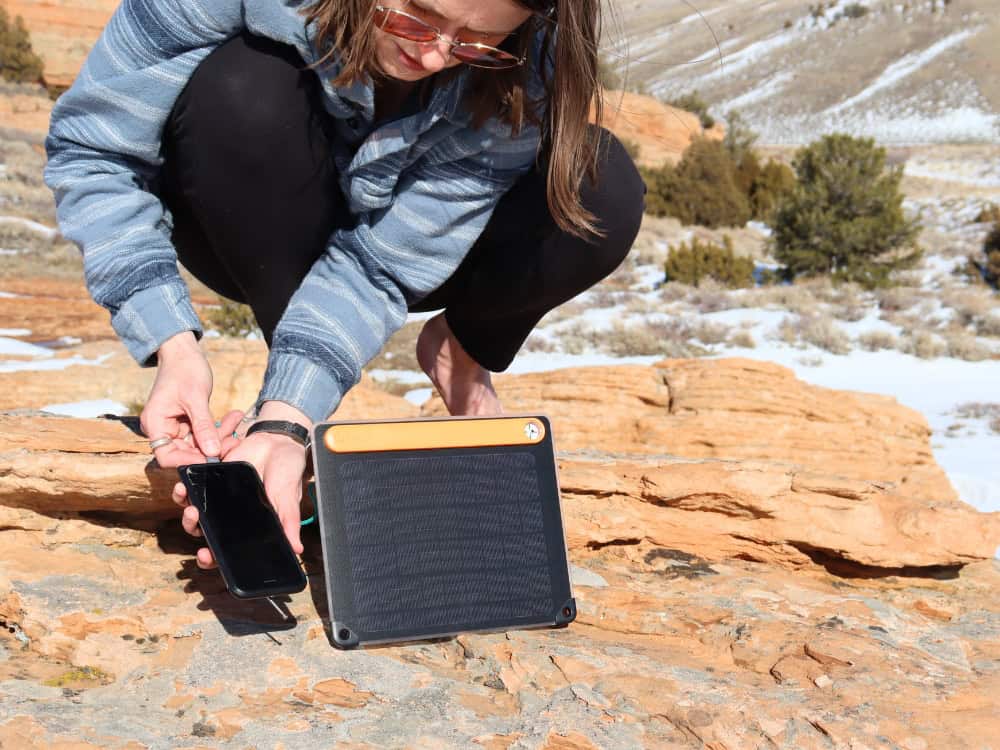
Disclaimer: There is no perfect picture of “sustainability”, nor is there one fixed achievement or end goal. It’s about doing what YOU can within your means.
Fortunately, there are lots of different strategies, actions, and lifestyle tweaks that together make up a much more sustainable way of living. Not all of them may work for you, and that’s okay! Start with what you can do today, and build momentum as you get more comfortable.
Because the more each individual implements even the smallest changes in their lives, the greater the impact we will collectively have.
Here are some of the most impactful and practical examples of living sustainably:
Using Your Voice
One of the easiest ways to live more sustainably is by, well, telling others what it means to live sustainably.
You can use your voice either directly through raising awareness and standing up for change or indirectly through making sure what you spend your money on really counts.
So as a precursor to the rest of this section, the most important thing you can do is to vote for those challenging the status quo. Demand better from our leaders in power (they are the ones with the capacity to make big change, after all) and vote with your dollar by supporting brands making a difference.
Because the reality is—as much as we hate that it’s so—your dollar (and lack of your dollar for that matter!) speaks far more loudly to Big Business than your voice ever can.
Minimalism
Consuming less stuff more thoughtfully will go a long way in your sustainable lifestyle. After all, sustainable living ultimately comes down to the 5 R’s.
- Refuse what you do not need
- Reduce what you do need
- Reuse by repurposing stuff and choosing reusable over disposable
- Recycle what you cannot refuse, reduce or reuse
- Rot (compost) the rest
Being more minimalist and buying less reduces waste on behalf of the consumer and reduces industry emissions by the manufacturer. Adopt a “need over want” mindset.
If you do need something, buy second hand first! Go thrifting, hit up garage sales, or scour Facebook marketplace. For instance, if you want to support sustainable fashion, but well-made timeless pieces that will last and support circularity by shopping online thrift stores or using clothing rental services.
Action: Anytime you feel inclined to buy something, ask yourself, “Do I REALLY need this? How much will I use it? Do I have something at home that would work or I could adapt to work for what I need? Could I borrow this from someone? Would this be easy to find second hand?”
Renewable Energy
Sustainable living says “no” to fossil fuels (and not just because we’re running out of them). Their extraction not only destroys the planet, but they burn dirty, releasing tons of CO2 emissions.
Renewable energy on the other hand includes energy derived from unlimited sources (i.e. sun, wind, water, geothermal, and biomass) that are clean to use. The benefits of renewable energy, both environmentally and economically, make it one of the biggest sustainable living solutions.
Action: Research renewable energy providers in your country/city and make the switch for your home energy. If that’s not practically or financially possible for you, buy from brands who use renewables when you can.
Organic & Regenerative Farming
To a large extent, organic food is grown without the use of chemical pesticides and herbicides. It’s not only better for you but MUCH better for the environment.
In fact, chemicals used by inorganic farming is one of the leading causes of biodiversity loss. The Bugs Matter monitoring scheme revealed a 64% reduction in flying insects in 18 years in the UK alone. Further reduction will lead to a food chain catastrophe.
What is regenerative agriculture though?
It’s a method of organic farming that focuses on improving soil health, sequestering carbon from the atmosphere, while also improving crop productivity.
Project Drawdown lists Regenerative Agriculture as the 11th most impactful solution for drawing down carbon (slowing and ultimately reversing climate change).
Action: Purchase from farmers that use organic and regenerative methods. You can often find them at local farmers markets and many now have online stores. Yes, these often cost a bit more, but if it’s within your means, investing in sustainable food systems is one of the smartest things you can do.
Self-Sufficient Eating
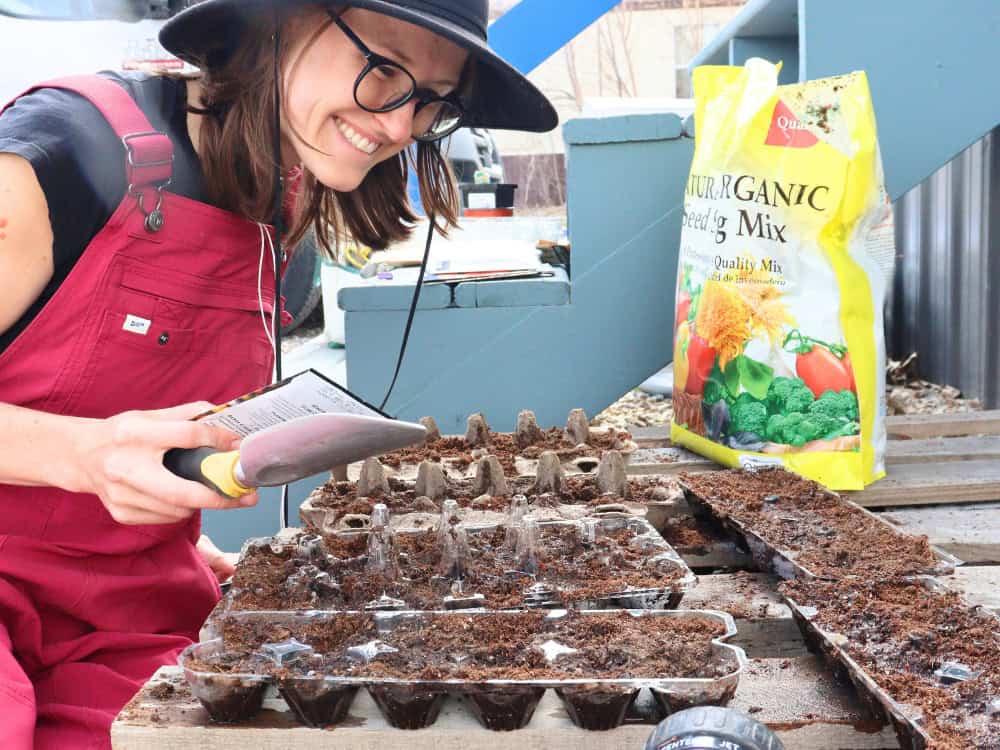
And there’s no way to better support organic agriculture than adopting its principles yourself. Besides, anyone who has successfully grown their own tomato knows the satisfaction of making something from just about nothing and the taste is oh so good!
Growing your own food using organic methods not only greens urban spaces but also sequesters carbon, makes cities greener, increases biodiversity, and reduces food travel miles.
In that vein, we’ve seen a recent surge of urban farming efforts, and a push to keep food grown locally, organically, and without excess: the trifecta of sustainable food.
Self sufficiency can go the extra mile when we consider what we feed our homes too, and going off-grid is a great option. Self-sustaining homes are independent of fossil fuels or mainstream non-renewable energy sources. Instead they make use of naturally collected rainwater, composting toilets, and wood burning heat.
Not to mention keeping produce fresh and preserving food to reduce food waste.
Action: If you’re new to gardening, start small and follow our ecological gardening tips. If you’re really limited on space, see if there are any community gardens in your area where you can rent a plot. This is a great way to get your green thumb wet, with many of the materials and space provided for you.
Plant-Rich Diets
Farming methods aside, adopting a plant rich diet is an incredibly impactful way to live more sustainably.
Research shows vegan diets result in 75% less climate-heating emissions, water pollution, and land use than diets in which more than 100g of meat a day was eaten. Vegan diets also cut the destruction of wildlife by 66% and water use by 54%, the study found.
The meat and dairy industry takes up 83% of all farmland and is responsible for 60% of the agricultural industry’s 13.7 billion tons of yearly emissions.
The Vegan Calculator suggests that adopting a plant-based diet can save 401,500 gallons of water, 10,950 square feet of forest, and 7,300 pounds of CO2 emissions per person per year—not to mention the 365 animal lives saved.
Numerous studies, such as the Natural Resources Defense Council’s report “Less Beef, Less Carbon”, all echo the same truth: meat, at least the way it is farmed today, is unsustainable and inhumane.
Action: Opt for plant-based where possible. Rest assured you don’t have to switch to an entirely vegan diet to make a difference. Consider simply eating less meat. Perhaps try Meatless Mondays, weekday veganism/vegetarianism, or a flexitarian diet.
Reducing Food Waste
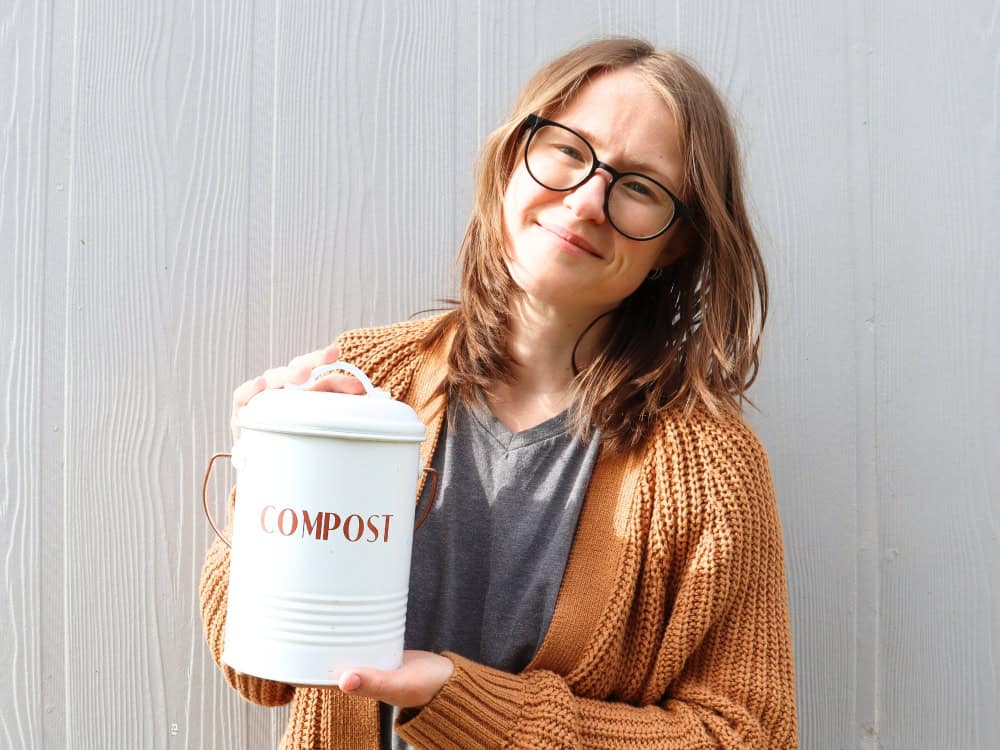
Food waste is the most ridiculous problem facing humanity and could be so easily solved.
Project Drawdown lists reducing food waste as the #3 most impactful solution to reducing carbon. Food is currently wasted all the way along the supply chain and it is extremely destructive in landfill, making up 8% of all emissions.
In America alone, people throw away 60 million tons of food every year, which is shocking when you consider most food is compostable.
Rather than send them to the landfill where they’ll decompose anaerobically and produce methane gas (the most powerful of the greenhouse gasses), turn your food waste into something beneficial for the planet. Space is no excuse: you can even compost in an apartment.
Action: Better planning can massively reduce food waste in the home alongside preserving and freezing food, finding creative ways of using food scraps, composting and growing your own food.
Sustainable Transportation
Sustainable living seeks to replace gas-guzzling, high horsepower vehicles with fuel-efficient, hybrid, or electric cars.
But we recognize the ability to afford such vehicles is a privilege, and sustainable transportation shouldn’t be reserved for only those who can afford it, nor should folks be shamed for driving their old gas guzzler they’re determined to keep alive. After all, making things last is sustainable in its own right.
Fortunately, there are much more cost effective methods to reduce your transportation impact. Action: Simply drive less where possible, whether through active commutes (cycling or walking) or, if your commute is too long, public transportation (trains and buses run whether you are on them or not) and carpooling.
Shopping Local
Shopping local rather than ordering online or buying from big box stores will cut your carbon footprint.
Consider how far something must be shipped before you support it. By buying locally, you’re not only supporting your local economy and smaller businesses, but you’re casting a vote against a world practically choking on shipping emissions.
If you do buy online, support ethical online alternatives.
Action: Check out your local farmer’s market and get to know the local growers in your area. For gifts and things, craft fairs and art walks are another excellent way to see where you can stock up on locally handmade artisan goods.
3. Benefits Of Sustainable Living
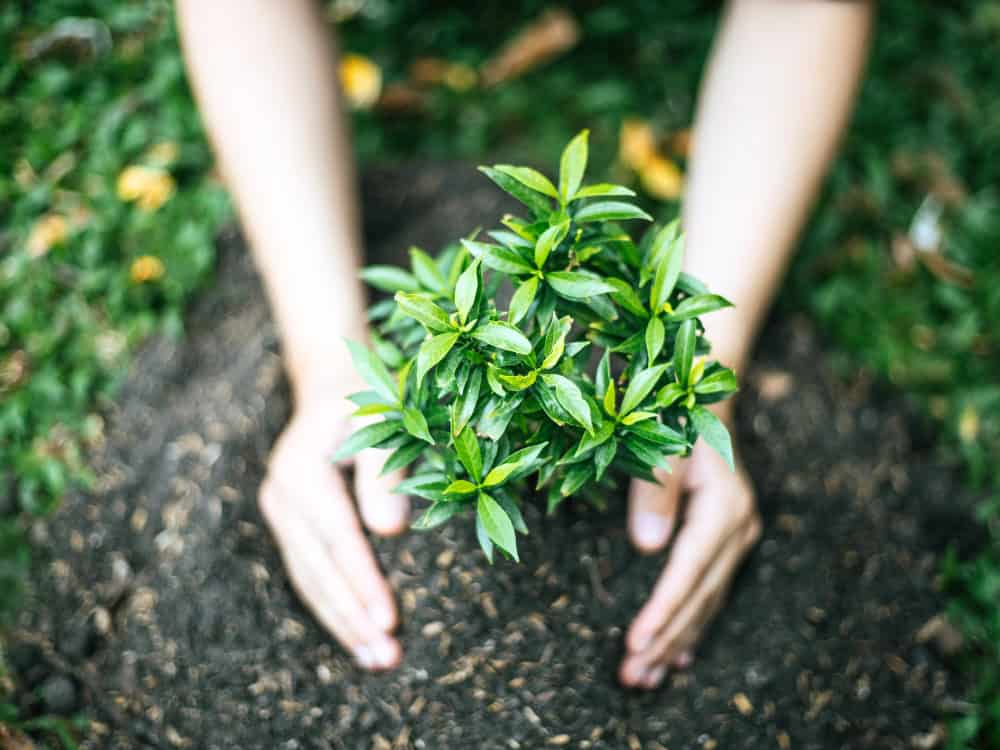
Sustainability and zero waste may be trending, but sustainable living must become the status quo. It’s a necessary lifestyle ethos that should become the default if we want to preserve the planet for future generations.
Climate change is happening. Resource depletion and biodiversity loss are happening. And we’re not just running out of unnecessary fossil fuels, but out of things like fresh water, which every single person and lifeform on the planet needs to survive.
The term itself denotes its own importance. Sustainable living: a means of sustaining life on this planet.
If you’re reading this article, you’ve already made a huge step in the right direction.
From here, take baby steps. Rather than setting your sights immediately on profound world-shattering changes, focus on what you can do TODAY to reduce your impact. Then think about what you can do tomorrow and keep going from there.
If you need more sustainable living ideas than the actions we’ve provided here, check out our list of 101 sustainability tips on reducing your impact with little to no effort.
No one expects you to start living off-grid immediately (or ever, really, because that’s just not realistic for most people!). Small steps in the right direction will take you far.
Did you know we Have a Newsletter?
We cover the latest in sustainable living, fashion, zero waste, beauty, travel, finance and more…
Pin these:
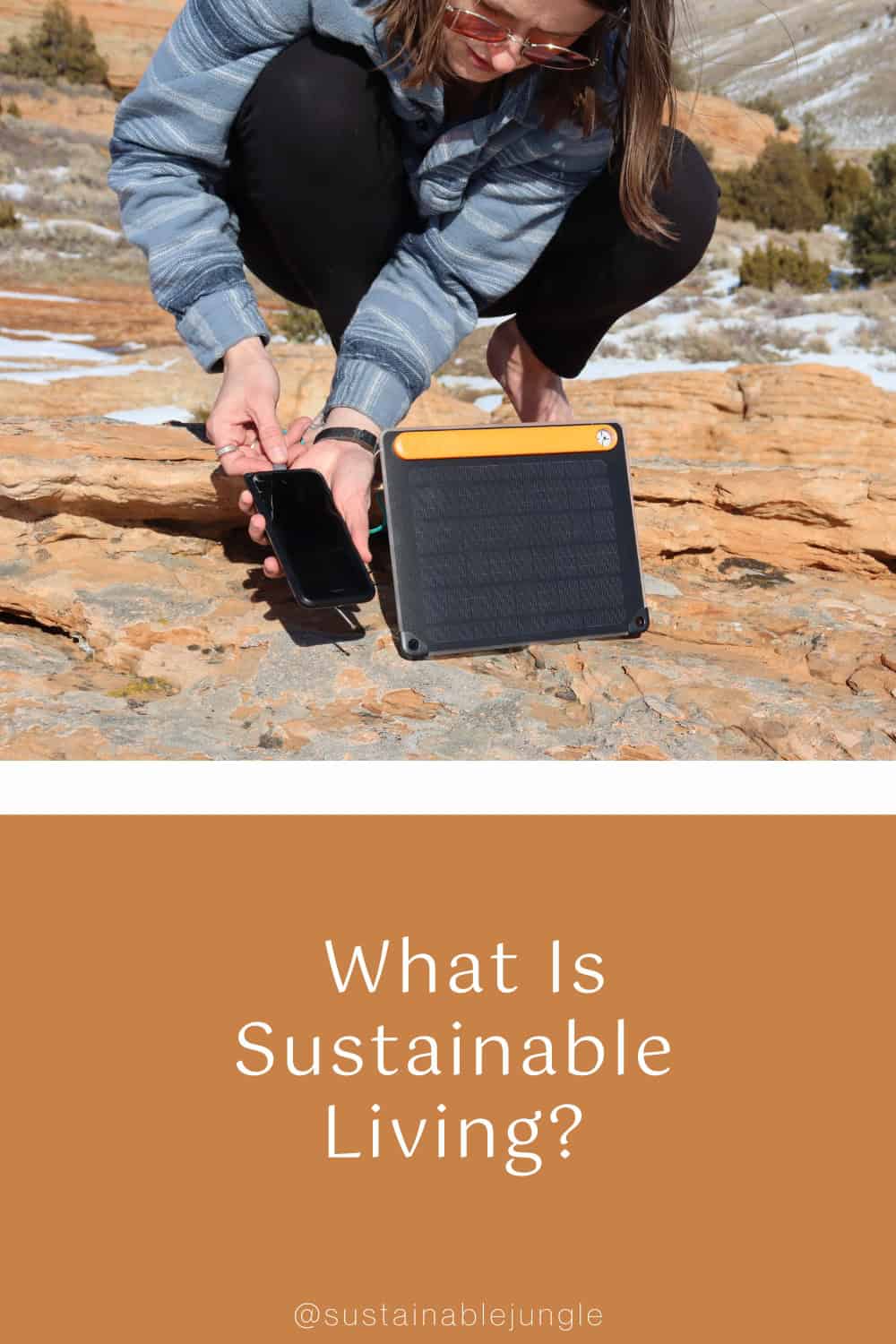
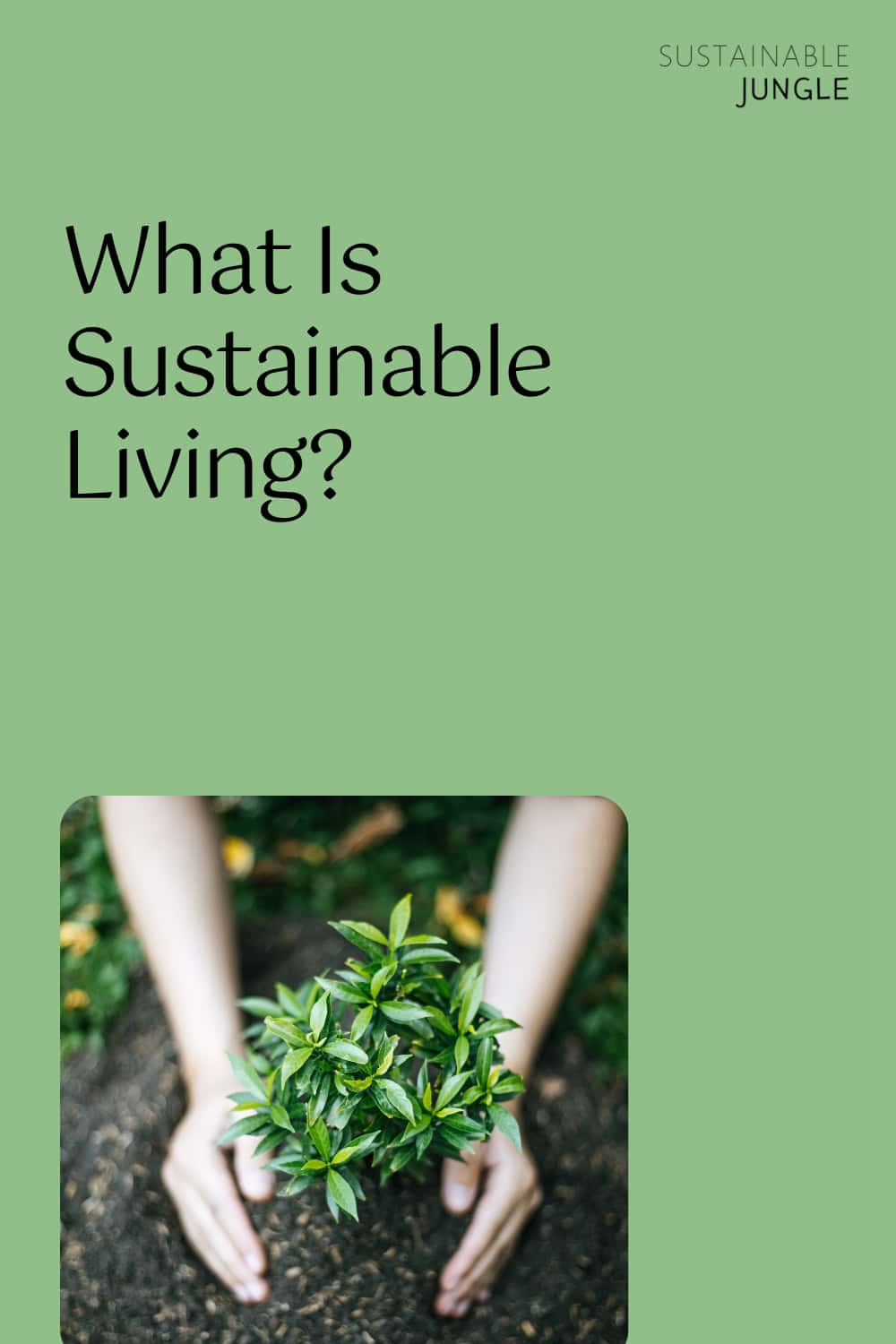

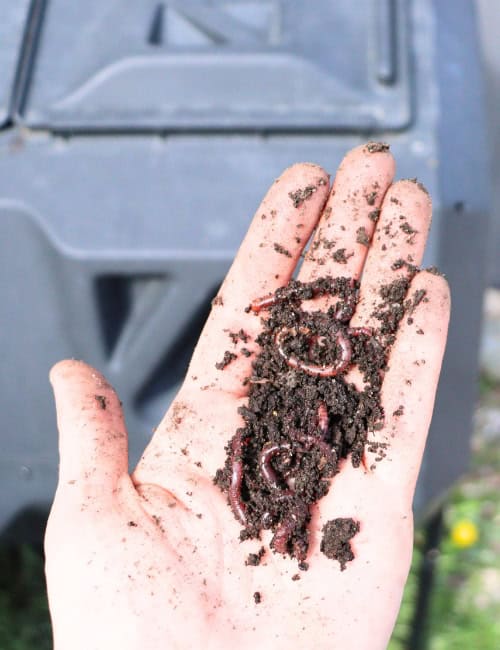


Great Article.
Recently I found Climesumer.com. It has a huge list of sustainable alternatives and shows ways to take effective climate action.
I love reading your articles. You spread every knowledge about every topic and the best part is you have updated everything for us timely. I know a Zero Waste Store in Australia that has very good products go and check the website.
I love reading your blog and thank you for this eye-opening and helpful article! I wanted to add that people can live more sustainably by giving away their cardboard boxes and packaging supplies on BoxGiver. I hope that helps!
Hi guys,
Epic article! And so excellently crafted!
I have an article on the 5rs on my own humble website, which gets a bits of traffic even though it’s in dire need of a rewrite. I’d love to a send a few extra readers your way to show my appreciation for how inspirational I have found you, so I’ll make sure to link to this when I get around to it 🙂
Stay safe!!!
Thanks Brett!
Very informative post! The 5 r’s are a great way to apply sustainable living practices. I catch myself everyday looking to make poor decisions on purchases or decisions that will not satisfy proper living in conjunction with living a more sustainable lifestyle. Be aware of your actions and question ourselves and we will begin to do a better job!
Thanks for the information!